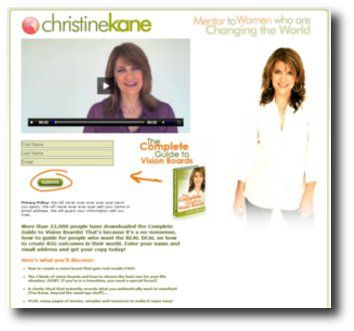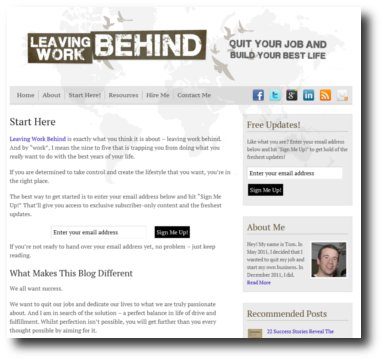I recently read the story of Eclipse, the horse described as the greatest racehorse of all time.
Eclipse raced between 1769-1770 and was unbeaten in eighteen races.
When Eclipse raced it was never a close finish. �He beat other horses by massive distances of one or two miles!
It was this amazing ability that gave rise to the phrase “Eclipse first, the rest nowhere“.
In your market are you beating your competition by miles like Eclipse or is the race to every new customer a close finish?
Follow these three steps and you’ll ensure that it’s your small business first, your competition nowhere.
1. Pick Races You Can Win
Eclipse was retired because other owners wouldn’t race their horses against him. �They knew they would lose.
Picking a race for your small business means picking a market where you can dominate. � You can do this by creating a niche and being different.
Create a Niche
Don’t try to be “everything to everyone”.
Pick an area of your market where you have the expertise and experience to specialise. �Specialising reduces the competition, and a race with fewer runners is always easier to win.
It doesn’t mean you have to turn customers away if they are outside of your niche. �You’re simply focusing your energy on winning the race you pick.
For instance as a web designer you could specialise in designing websites for restaurants.
This focused marketing approach reduces your competition and makes you attractive to your target customers who will see you as the “go to” person in your niche.
Be Different
If you’re facing too much competition, even in your niche, you need to be different.
You need to stand out. �Give new customers a reason to be interested in your small business.
If you’re an accountant and the other accountants in your niche all lead their marketing on audit work or tax advice you could attract new customers by marketing your “finance for non-financial managers” training courses.
As a restaurant you could use items of interest that people will want to see, creating a complete customer experience. �At Shanahan’s on The Green in Dublin they have JFK’s original rocking chair in a case in their “Oval Office” bar. �This attracted me to the�restaurant�because I wanted to see the chair and the other items on display.
Once you’ve gained peoples interest you can build customer relationships�and introduce your other services.
2. Be Blinkered
Blinkering a horse in a race helps ensure that it remains focused on where it’s going and not what’s going on around it.
It ensures that the horse doesn’t become distracted.
In your race to beat your competition you need to keep your small business marketing focused. �Don’t change what you’re doing just because those around you do.
A competitor of a client of mine took several pages in the centre of a local newspaper and filled them with�advertisements�for low quality products and cheap prices. �My client specialises in offering high quality products, great service and has a lot of knowledge. �Following what his competitor did would have wasted a lot of money and would have damaged his reputation because it doesn’t fit his image and wouldn’t attract his target market.
You need to find what’s right for you and keep doing it.
Consistent activity is one of the key factors in ensuring you avoid the feast and famine cycle�and keep your small business growing.
3. Use Your Advantage
Eclipse’s advantage on the race course was his�phenomenal�speed. � It allowed him to leave his competition standing.
In modern racing horses often have their own advantages. �Some have stamina, some jump superbly and some take to a type of ground better than others.
What advantages does your small business have that will help you beat your competition? �It could be any of a number of factors including:
- broader product range
- larger local stock
- greater industry experience
- faster delivery speed
- more personal touch
Let people know if your practice has the largest number of qualified lawyers in Toronto. �That would be an attractive benefit to a client who is deciding who to approach with a major piece of legal work.
But don’t ever use price as an advantage. �There will always be someone else who is willing to sell at a lower margin and take a lower profit than you. �That’s a race to the bottom and in it no-one wins.
Know your advantage and ensure it’s clear in your marketing.
The Bottom Line
Pick your niche, be focused and use your advantages to be like Eclipse.
Be so differentiated in your market that you have no competition racing against you!
Your small business first, your competition nowhere.
What are your thoughts on beating your competition? �Please join me for a discussion in the comments.



